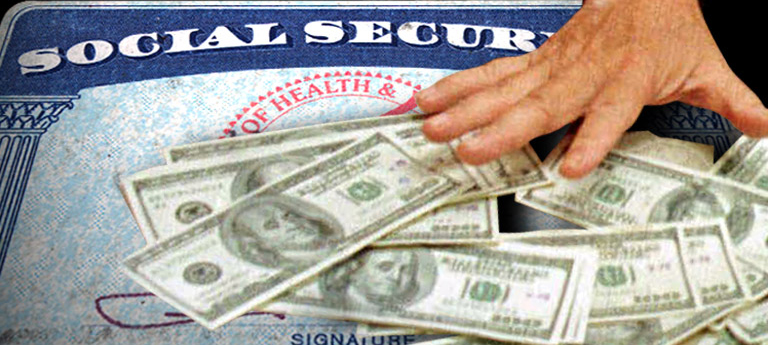What keeps driving inflation so high? The answer, it seems, is nearly everything.
Supply chain snarls and parts shortages inflated the cost of factory goods when the economy rocketed out of the pandemic recession two years ago. Then it was a surge in consumer spending fueled by federal stimulus checks. Then Russia's invasion of Ukraine disrupted gas and food supplies and sent those prices skyward.
Since March, the Federal Reserve has been aggressively raising interest rates to try to cool the price spikes. So far, there's little sign of progress. Thursday's report on consumer prices in September came in hotter than expected even as some previously big drivers of inflation — gas prices, used cars — fell for a third straight month.
Consumer prices, excluding volatile food and energy costs, skyrocketed 6.6% from a year ago — the fastest such pace in four decades. Overall inflation did decline a touch, mostly because of cheaper gas. But costlier food, medical care and housing pointed to a widening of price pressures across the economy.
High inflation has now spread well beyond physical goods to the nation's vast service sector, which includes everything from dental care and apartment rents to auto repairs and hotel rates. The broadening of inflation makes it harder to tame. Thursday's report underscored that the Fed may have to jack up its key short-term rate even higher than had been expected — and keep it there longer — to curb inflation.
Such action would mean even higher loan rates for consumers and businesses. It could also cause recessions in both the U.S. and global economies, international financial officials warn. Higher U.S. rates encourage investors to pull money from foreign markets and invest it in U.S. assets for a higher return, a shift that can cause upheaval in overseas economies.
Here's what's driving persistent inflation and what it means:
SPENDING STILL HOLDING UP — FOR SOME
Consumers, on the whole, are still managing to spend more, even though average wage gains over the past year haven't kept up with inflation. Many businesses, particularly larger corporations, have taken advantage of rising wages and increased consumer savings from government stimulus checks to raise their prices.
PepsiCo, for example, said Wednesday that while purchases by volume fell 1% in the third quarter of the year, it was able to boost prices 17% without losing customers.
"We obviously exited the third quarter with the consumer still very healthy in terms of our particular categories,” the company's chief financial officer, Hugh Johnston, told investors.
Still, for many Americans, declining wages (after adjusting for inflation) could eventually slow demand and help force companies to lower prices.
Already there are signs that some Americans, particularly lower-income families, are balking at inflated prices. Sales of used cars fell over the summer. One major car dealer, the CarMax chain, blamed “vehicle affordability challenges that stem from widespread inflationary pressures, as well as climbing interest rates” for the decline.
At the same time, Jonathan Smoke, chief economist at Cox Automotive, said that many higher-income consumers have stepped into the used car market, offsetting at least some of the loss from previous buyers.
“We see increases in higher-income households buying used vehicles,” Smoke said. “The profile of who’s buying used is a dramatically upper-scale type of customer.”
SERVICES INFLATION TAKES OVER
Rising prices can often lead consumers to switch their spending to other things, rather than cutting back overall. Right now, for instance, Americans are switching more of their spending from physical goods to services. And that shift is evident in the categories where prices are rising.
“Most people in America spend pretty much their whole budget anyway," said Eric Swanson, an economics professor at the University of California, Irvine. “So the money’s going to get spent, it’s just a question of what it’s going to get spent on.”
In September, the price of one major service — restaurant meals — jumped 8.5% from a year earlier. It was the largest such increase in 41 years. Likewise, Delta and American Airlines are reporting strong revenue gains as more Americans show willingness to spend on travel.
Yet restaurants, airlines and hotels all still have far fewer workers than they did before the pandemic. With demand healthy, companies in those industries have been forced to provide hefty pay raises to attract or keep workers. Those raises are often then passed on to consumers in the form of higher prices — a cycle that feeds inflation.
Many other services are also reporting big price increases, including health care, car insurance, veterinarian services and dentists' visits. Eye care and eyeglasses jumped 3.2% from August to September, the sharpest increase for that category on record.
HOUSING PRICES DEFY FED
The Fed's rate hikes have led to vastly higher mortgage rates, which have contributed to a 20% plunge in home sales from a year ago. Once-hot home prices even fell in July on a monthly basis, according to the most recent data from the S&P Case-Shiller home price index.
Apartment rental costs are also starting to slow, according to real time data from ApartmentList and Zillow.
Yet in Thursday's inflation report, one key measure of housing costs jumped 0.8% from August to September. It was the largest monthly increase in 32 years. The divergence occurred because the government's rent gauge operates with a significant lag: It tracks all rent payments — not just those for new leases — and most of them don’t change from month to month. Economists say it could be a year or more before the declines in new leases feed through to government data.
WILL THE FED CAUSE A RECESSION?
That's the biggest fear overhanging the economy. Chair Jerome Powell and other Fed officials have said that they will base their policies only on changes in the government's inflation data, rather than in response to data from other sources.
Yet that sets up a high-risk challenge for the central bank: Will it keep hiking rates, or leave them at high levels, if forward-looking data suggests that rental costs are declining?
For now, the Fed is willing to err on the side of continuing to raise borrowing rates. According to the minutes of its last meeting in September, policymakers “emphasized that the cost of taking too little action to bring down inflation likely outweighed the cost of taking too much action.”
FED PREPARED TO WEAKEN ECONOMY FOR A ‘FEW YEARS’
At their most recent meeting in late September, Fed officials warned that their rate hikes would likely slow the economy for an extended period, with growth coming in at “ a below-trend pace in this and the coming few years" and unemployment likely rising.
Among central bank officials, Loretta Mester, president of the Federal Reserve Bank of Cleveland, this week sounded one of the hardest-line notes when she suggested that “it will take a couple of years before inflation returns to the Fed’s 2% goal.”
“We cannot say that inflation has even peaked yet,” Mester said.



